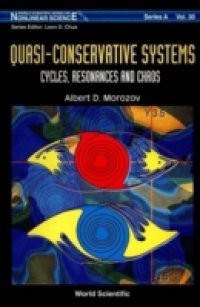This monograph presents the theory of nonconservative systems close to nonlinear integrable ones. With the example of concrete quasi-conservative systems close to nonintegrable ones, the results of numerical analysis are given, and the problem of applying the small parameter method is analyzed.The fundamantal part of the book deals with the investigation of the perturbable systems. Both autonomous and nonautonomous (periodic in time) systems are considered. The global analysis of systems close to the two-dimensional Hamiltonian ones takes a central place in the text. This global analysis includes the solution to problems such as the limit cycles, resonances, and nonregular dynamics. For the autonomous systems, one should note the analysis of the standard (Duffing and pendulum) equations including the solution to the “weakened” 16 Hilbert's problem, and for the nonautonomous systems one should note the mathematical foundations of the theory of synchronization of oscillations (the existence of new regimes, and the passage of invariant tori across the resonance zones under the change of detuning). The presentation is accompanied by examples.Contents:Introduction and Review of Main ResultsConservative Nonlinear Systems:Integrable Nonlinear SystemsNon-Integrable Hamiltonian SystemsQuasi-Conservative Nonlinear Systems:Perturbed Autonomous Systems with One Degree of FreedomPeriodic Perturbations of Two-Dimensional Hamiltonian SystemsGeneralizations and ApplicationsNon-Quasi-Integrable SystemsReadership: Nonlinear scientists, engineers and physicists.Key Features:Introduction of survival examples from tsunamiVivid description of life-versus-death scenariosDescription of tsunami behaviors as helpful knowledge for survivalHow to prevent and mitigate tsunami disastersTsunami simulation and forecasting system (present and future)

